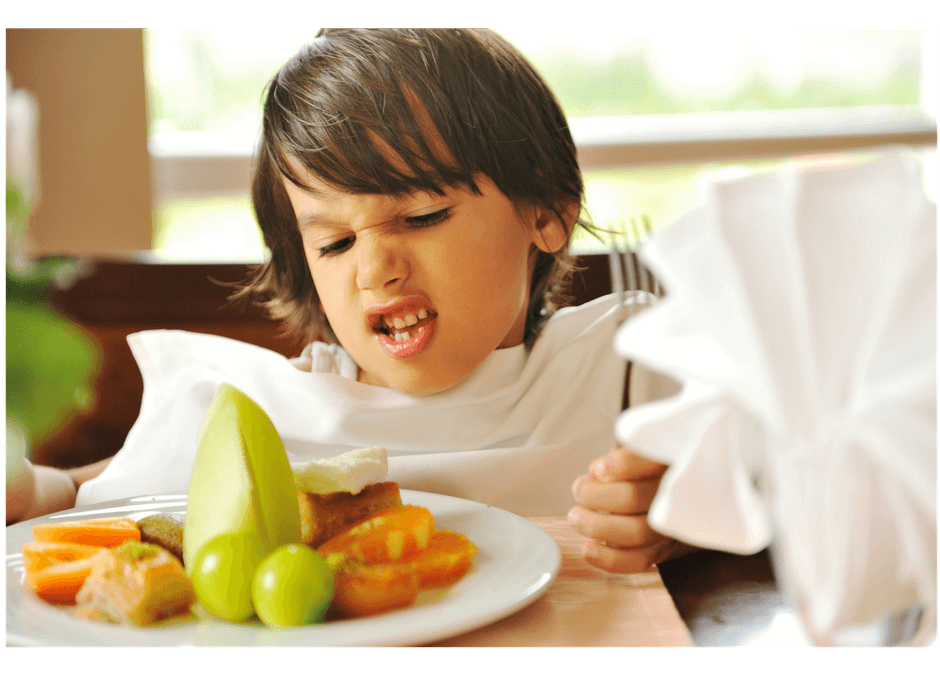You think ahead, you plan and prepare the meal. It’s dinner time and your child refuses to eat. So the battle begins… Stop right there! Try not to think “this has to be my way” but “what is the best way to encourage my child to eat?”.
Here are some tips for winning the war (before the war even starts!)
- Don’t ask questions
- Careful with snacks
- You are in charge
- Remember that your child wants to be in control
- Have family meals
- Friends may help
- Always offer
- It’s ok to be messy

1. Don’t ask questions
Asking your toddler questions like “would you like to try…” leaves room for the big “no” that you don’t want to hear. So, instead of asking, say “today we are having…”.
2. Careful with snacks
If not hungry, your toddler won’t eat. Pace your meal at least 2 hours from the prior snack. You can offer water and tell your child that “dinner is almost ready” if he asks for a snack just before dinner.

3. You are in charge of what your child eats
Prepare the meal and serve it. Identify the different entrees to your toddler. Show the food. Serve only what you want her to eat. Set the example, serve yourself healthy foods that you like, so your child sees you enjoining. Keep in mind that everything is new for your toddler, so talk about what you are eating and describe it. That may take away a bit of the unknown and make your child curious to try.

4. Remember that your child wants to be in control
Don’t negotiate. The first step is to get your toddler to the table without any drama. Give the warning “in two minutes we will sit on table to have lunch”. Give choices “Do you want your blue plate or green plate?”. The second step is to go thought the meal in a positive mood. You can encourage your toddler to eat, but don’t push it. Give her options without making it a big deal. “You don’t like your potatoes? Ok, try the yams instead” and keep going with the dinner. It’s important that the alternative food is chosen from the same food group, so plan to have different options of proteins and carbohydrates.

5. Have family meals: eat together
Remember that meal time is not only for nutritional purposes, but also a time to talk, share and socialize. Create a good atmosphere. Be warm and engaged. Keep the TV (and iPad) turned off. The focus must be on the food and connecting as a family.

6. Friends may help
Toddlers connect with peers. Plan playdates and have healthy snacks available. Your toddler will see her little friend having fruits and veggies and will want to try them too.

7. Always offer
Plan ahead to always have something that your child never tried before. Give funny names to new food. Peas can be “small little green balls”, broccoli can be “green trees”. You’re your green trees!” Make it fun!

8. It’s ok to be messy
Let your child feed herself. Give her the opportunity to try. It will seem like she is struggling, but that’s how she learns. Have proper toddler utensils and give hand on hand help if necessary. Give your toddler her own bowl of food. Make it positive and encourage her to try.

9. Set the example
Let your child see you eating the foods you want him to eat. When he appears interested, say, “Oh I will share with you! Would you like a bite?”. Then let him reach for the food himself and share a bite from your plate. (This works nearly every time!).
Written by: Marilee Harling & Paula Boscardin
A special thank you to Cynthia Epps for sharing her materials and knowledge with us. Cynthia is our feeding consultant and frequent guest speaker for our group programs. (click here to learn more about our team)


Trackbacks/Pingbacks